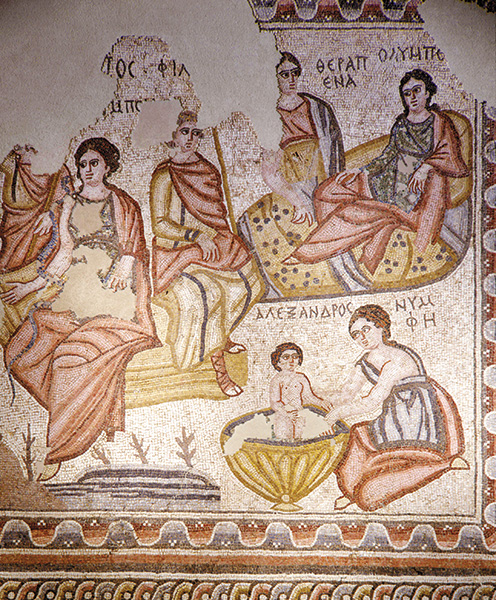Image Details

Gianni Dagli Orti/The Art Archive at Art Resource, NY
OLYMPIAN BIRTH. In the genre of Greco-Roman biography, it was not uncommon for legendary, as well as historical, figures to be given two conception stories—one supernatural and one natural. Plutarch’s biography of Alexander credits both the god Apollo and Philip II of Macedon as Alexander’s father. One tradition relates that Philip, Olympias’s husband, fathered Alexander. A fourth-century mosaic from the villa of Soueidié near Byblos, Lebanon, which details the birth of Alexander, does little to clarify the matter. The left scene of the mosaic features Olympias and Philip seated on a couch with a third—very damaged—figure to the left. A large serpent crawls up Olympias’s right arm—its head next to her mouth. Thus, both of Alexander’s “fathers” are present. In the right scene of the mosaic, Olympias is seen reclining on a couch having just given birth; she is attended by a handmaid. Below Alexander is bathed in water by a nymph, hinting at his divine conception.
